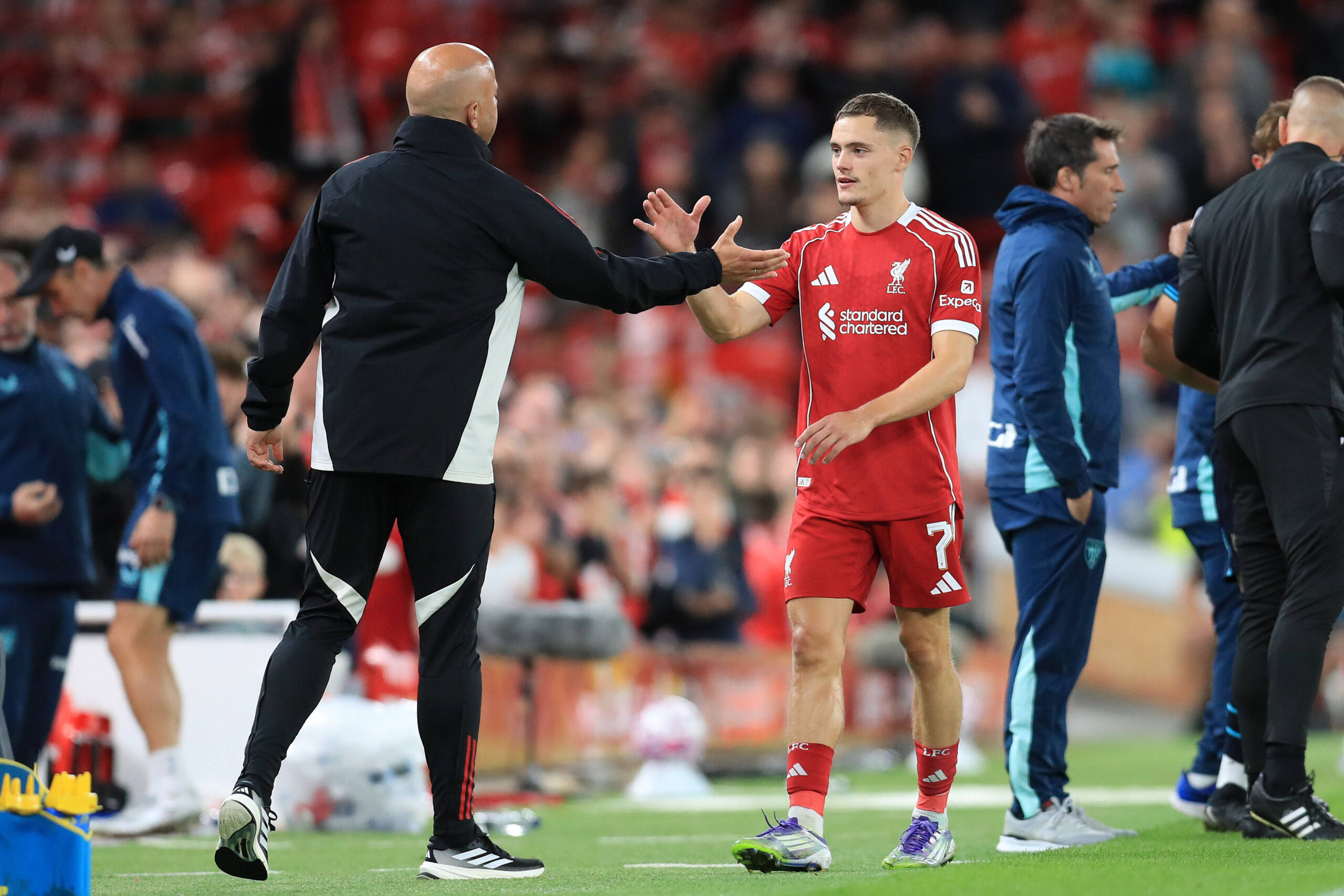Hughes’ high-stakes summer spending
When Hughes took over recruitment responsibilities at Liverpool, there was anticipation of a measured rebuild. His first window was cautious, setting up foundations rather than fireworks. However, his second summer in charge was anything but restrained. Over £450m was committed to strengthening the squad, with two record-breaking transfers — Florian Wirtz and Alexander Isak — symbolising Liverpool’s ambition to reclaim domestic and European dominance.
Both players arrived with lofty expectations. Wirtz, a generational creative force from Bayer Leverkusen, was seen as the natural successor to Liverpool’s most inventive midfielders of recent eras. Isak, meanwhile, brought a blend of physical presence and technical finesse to lead the line. Combined, their fees pushed the club’s total spend well beyond the £250m mark, creating a financial and tactical puzzle that Slot must now solve.

Slot’s tactical conundrum
Against Aston Villa, Liverpool produced arguably their sharpest performance of the season — yet neither Wirtz nor Isak started the match. The German playmaker was introduced late on, while Isak watched the entire 90 minutes from the bench. Ironically, the win, built on intensity and defensive stability, arrived with many of the new marquee signings absent.
Slot’s preference for cohesion and discipline over individual brilliance was clear. Giorgi Mamardashvili, now settled between the posts, delivered his first Anfield clean sheet. Hugo Ekitike led the line with purpose and energy, while the midfield worked tirelessly to press and recycle possession. It was a reminder that systems — not superstars — often define Liverpool’s best performances.
However, for a club that has invested over £250m on elite attacking and creative options, the optics of leaving such players out cannot be ignored. Integrating expensive signings without disrupting the team’s rhythm is proving to be Slot’s greatest challenge since his arrival.
Wirtz and Isak’s slow adaptation
Adapting to life at Liverpool is rarely straightforward. The club’s pressing demands, physical intensity, and emotional weight can take time to absorb. Wirtz, while clearly gifted, has yet to find the rhythm that made him such a standout in the Bundesliga. Isak, too, has struggled to replicate the efficiency and confidence that defined his Newcastle United spell.
In both cases, patience is essential. Slot and Hughes will know that high-value acquisitions are long-term investments. Yet, supporters — and critics — are already beginning to question whether Liverpool’s new era is being built on solid ground or expensive uncertainty.
Slot’s balancing act
The challenge for Slot is one of balance and timing. He must ensure Liverpool continue to collect points while easing new recruits into a tactical structure that rewards chemistry over chaos. With key fixtures on the horizon, rotation will be unavoidable, and his man-management will come under increasing scrutiny.
For Hughes, meanwhile, this moment represents a test of planning and perspective. The club’s transfer strategy has prioritised youth, talent, and long-term potential — but in football’s unforgiving spotlight, immediate impact often defines public perception.
Liverpool’s £250m dilemma, then, is as much psychological as tactical. The club’s hierarchy will need unity and patience if these investments are to fulfil their promise. For now, Slot’s side may look more convincing without its most expensive stars — but that, more than anything, highlights just how delicate this rebuild truly is.




